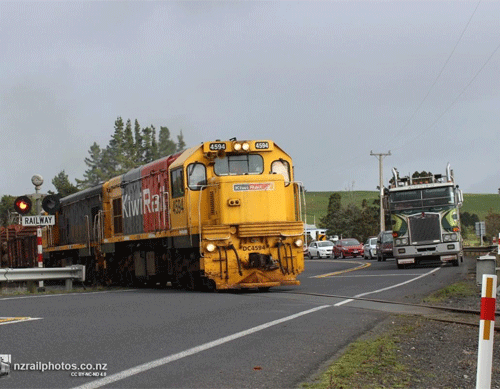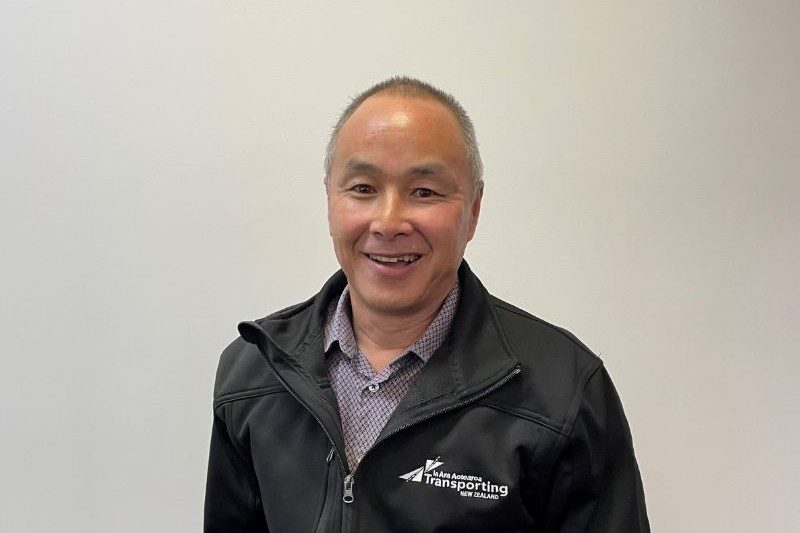
Four serious collisions between heavy vehicles and trains in three months have highlighted a worrying trend, according to rail safety charity TrackSAFE NZ, which is launching a research project to help improve safety for heavy vehicle drivers around railway level crossings.
Market research company UMR has been commissioned to undertake the study, a collaborative project with the NZ Transport Agency, KiwiRail and the Road Transport Forum.
The project was announced at the RTF conference in Hamilton and is based on heavy vehicle operators‘ feedback on their experiences around level crossings.
TrackSAFE Foundation NZ manager Megan Drayton says the research is an exciting undertaking.
“This will be the first study in New Zealand that specifically takes into account the views of heavy vehicle operators. We really hope the insights we get will lead to improvements in safety for truck drivers as they drive over level crossings.”
Drayton says while collisions between trains and heavy vehicles are relatively infrequent in comparison with vehicle-to-vehicle accidents on the road, they have the potential for considerable loss of life and serious trauma.
Since 2010 there have been more than 23 collisions between trains and heavy vehicles. In October this year the driver of a Waste Management truck was killed in a collision with a train in the Bay of Plenty. There have been three other heavy vehicle collisions this year – south of Masterton, at Te Puke, and south of Invercargill.
“These incidents can be devastating for everyone affected,” Drayton says. “Each and every collision has a traumatic impact not just on the victims and their friends and families, but also the wider community and the rail staff involved.”
Drayton says there have also been more than 300 reported near misses and the frequency of those is increasing. As at September this year, train drivers reported 33 near misses with heavy vehicles across New Zealand, up from 24 for the same period the year before – a rise of 38%.
The trend may in part be due to improved reporting, as well as increases in the frequency of train services and the number of kilometres travelled by trucks. Canterbury, Auckland and Waikato have recorded the greatest number of near misses between trucks and trains.
Drayton also notes that there are a number of environmental factors at level crossings that can increase the risk for heavy vehicle operators.
“According to the Transport Accident Investigation Commission, around 19%, or 264, of our level crossings have short stacking distances. Short stacking means a long vehicle will not be able to completely clear the level crossing when it is stopped at an adjacent road intersection.
“There are also some level crossings where the profile or the change of rate in gradient may not be compatible with vehicles that have low, albeit legal, ground clearance,” she says.
TrackSAFE NZ is looking for about 1,000 heavy vehicle drivers to sign up to participate in an initial online survey. All participants go into a prize draw for one of five $200 fuel vouchers.
Some of the information TrackSAFE NZ would like to get from drivers is how they perceive the risk around railway level crossings and how those perceptions affect their behaviour around a crossing. For example, some questions may look at how heavy vehicle drivers behave when approaching level crossings protected by give way or stop signs, while others will investigate the degree to which heavy vehicle drivers understand train stopping distances.
The research will be used to develop a new safety campaign and provide valuable information for level crossing upgrades and trials of new technologies.
For more information about the research please email tracksafe@tracksafe.co.nz or phone (04) 498 2010. To register directly for the research, email karen.connell@umr.co.nz or phone Karen on 04 473 1066.





